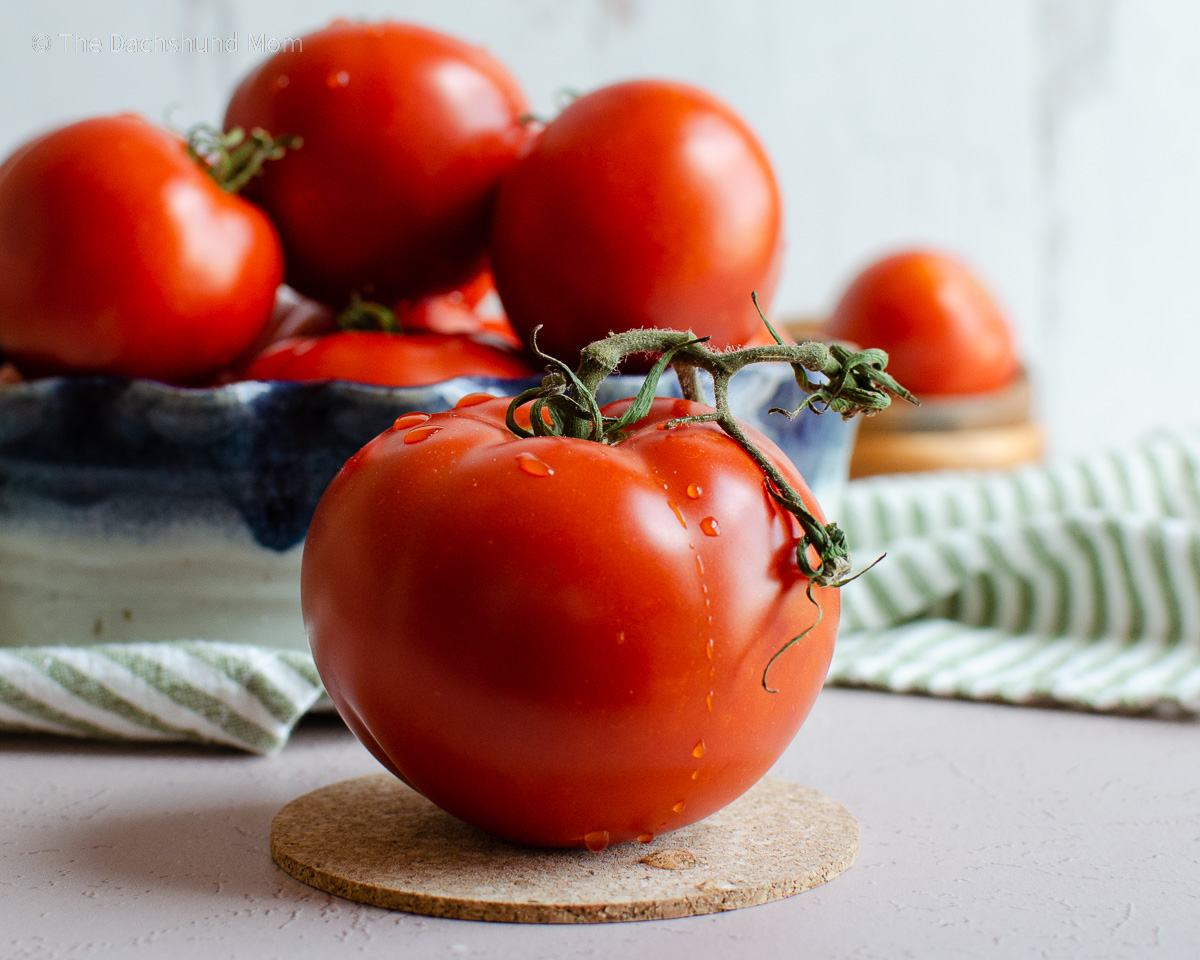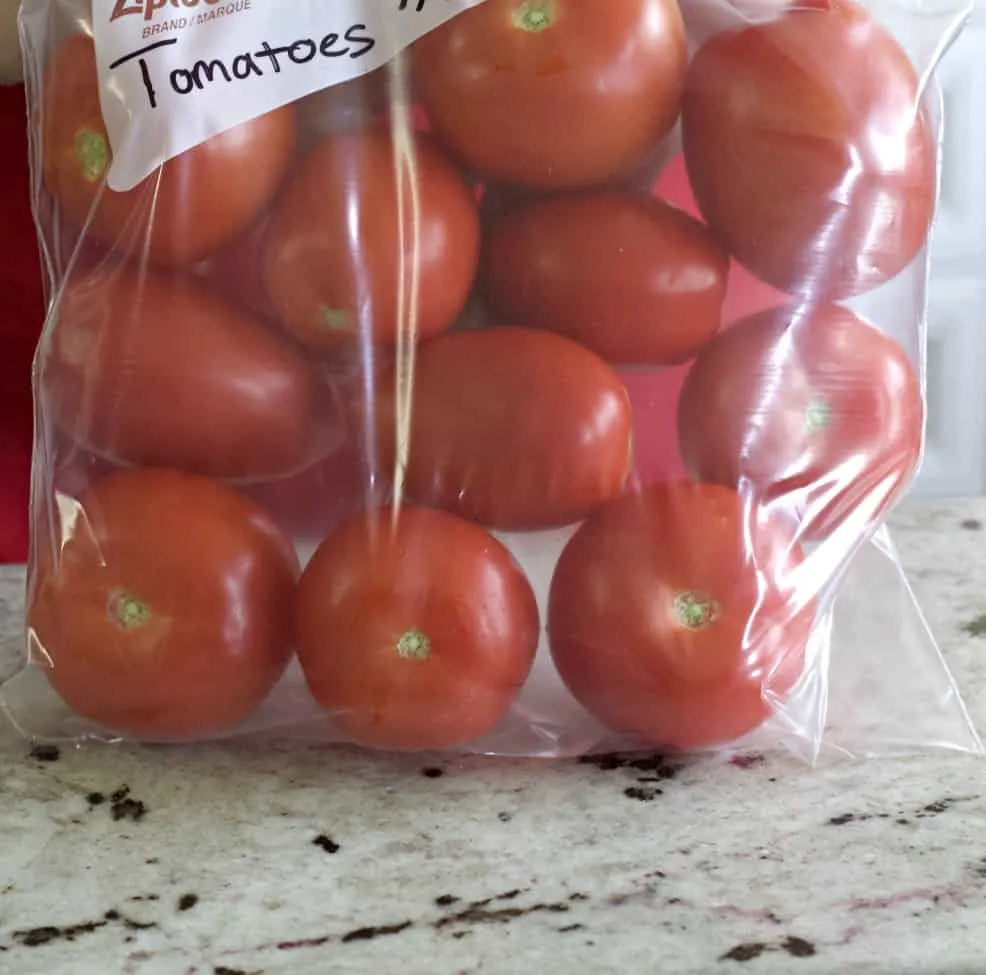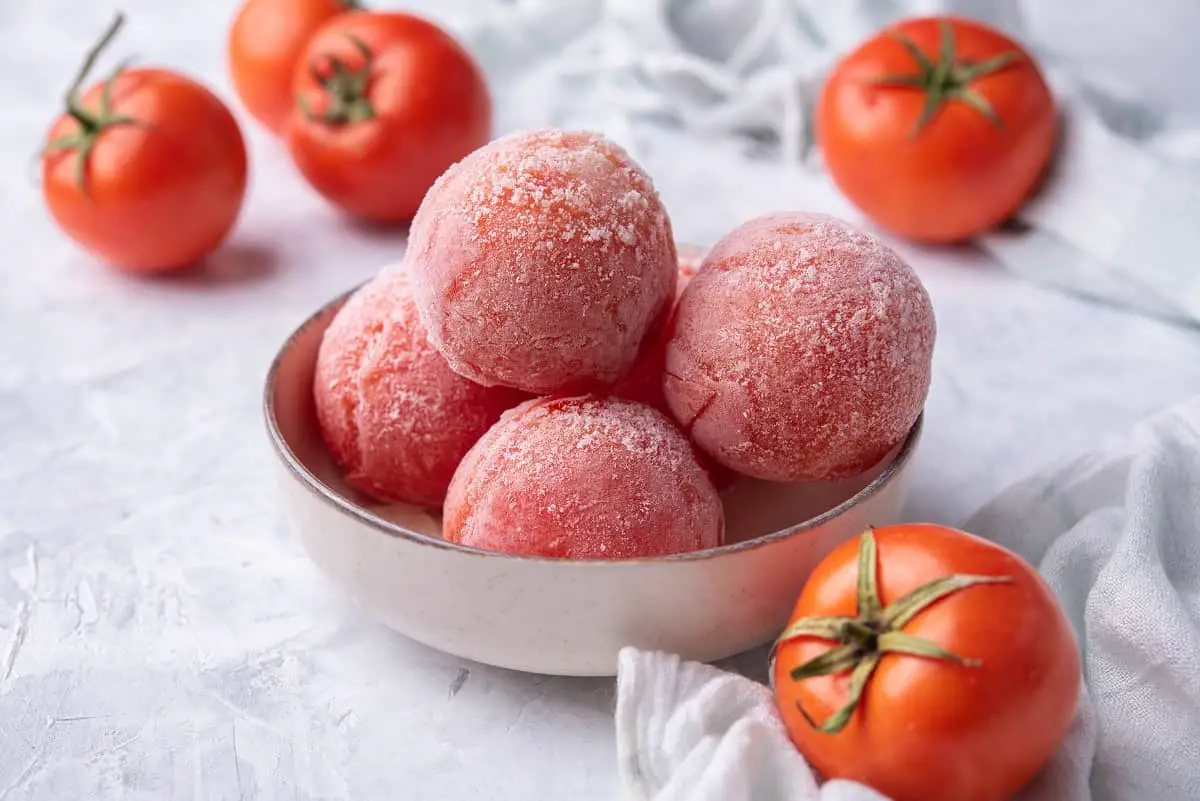Freezing fresh tomatoes is an effective way to preserve their flavor and nutrients. To do this, wash and core the tomatoes, then blanch them in boiling water for about 30 seconds. After cooling them in ice water, peel off the skins, chop if desired, and place in airtight containers or freezer bags. Label and freeze.
Summer’s fleeting sweetness is captured perfectly in a ripe, juicy tomato. But what happens when the season ends and you’re left with a glut of garden-fresh beauties? Freezing is an excellent way to preserve those vibrant tomatoes and enjoy their delicious flavor all year long. This guide will walk you through everything you need to know about freezing fresh tomatoes, from preparation to uses, so you can savor the taste of summer even in the dead of winter.
Why Freeze Tomatoes?

Freezing tomatoes offers a multitude of benefits:
- Reduces Waste: Prevent perfectly good tomatoes from ending up in the compost bin.
- Extends Shelf Life: Keep your tomatoes usable for up to 8-12 months.
- Saves Money: Enjoy the savings of buying (or growing!) in bulk during peak season.
- Convenience: Have ready-to-use tomatoes on hand for sauces, soups, and stews.
Which Tomatoes Freeze Best?

While you can freeze any tomato variety, some tend to hold up better than others.
- Ideal Choices: Romas, San Marzano, and other paste tomatoes are excellent due to their meaty texture and lower water content.
- Good Options: Beefsteak, heirloom, and other larger varieties can also be frozen, but they may become slightly more watery after thawing.
- Not Recommended: Cherry tomatoes can be frozen, but their delicate skin may become tougher. Consider other preservation methods like drying or pickling for these.
Methods for Freezing Tomatoes: A Step-by-Step Guide

There are several methods for freezing tomatoes, each with its own advantages. Choose the one that best suits your needs and time constraints.
1. Freezing Whole Tomatoes
This is the simplest method, perfect for a quick and easy preservation option.
- Steps:
- Wash and Dry: Thoroughly wash and dry the tomatoes.
- Core (Optional): You can core the tomatoes if desired, but it’s not necessary.
- Flash Freeze (Recommended): Spread the tomatoes on a baking sheet lined with parchment paper, making sure they don’t touch. Freeze for 1-2 hours until solid. This prevents them from clumping together in the bag.
- Transfer to Freezer Bags: Transfer the frozen tomatoes to freezer-safe bags, removing as much air as possible. Label with the date.
2. Freezing Tomato Slices or Diced Tomatoes
This method is great if you want pre-cut tomatoes ready for cooking.
- Steps:
- Wash and Prepare: Wash and dry the tomatoes. Slice or dice them according to your needs.
- Blanch (Optional): Blanching (briefly boiling) tomatoes helps preserve their color and texture. Submerge slices or diced tomatoes in boiling water for 30-60 seconds, then immediately transfer to an ice bath to stop the cooking process.
- Drain and Dry: Drain the tomatoes thoroughly and pat dry with paper towels.
- Flash Freeze (Recommended): Spread the slices or diced tomatoes on a baking sheet lined with parchment paper. Freeze for 1-2 hours until solid.
- Transfer to Freezer Bags or Containers: Transfer the frozen tomatoes to freezer-safe bags or containers, removing as much air as possible. Label with the date.
3. Freezing Tomato Sauce or Puree
This is a fantastic way to preserve the flavor of summer in a convenient, ready-to-use format.
- Steps:
- Prepare Sauce or Puree: Make your favorite tomato sauce or puree recipe. Allow it to cool completely.
- Portion: Ladle the cooled sauce or puree into freezer-safe containers or bags. Consider portioning into sizes that you typically use for cooking (e.g., 1-cup or 2-cup portions).
- Leave Headspace: Leave about 1/2 inch of headspace in containers to allow for expansion during freezing.
- Seal and Label: Seal the containers or bags tightly and label with the date.
4. Freezing Roasted Tomatoes
Roasting tomatoes before freezing enhances their sweetness and adds a depth of flavor.
- Steps:
- Roast Tomatoes: Halve or quarter the tomatoes and toss them with olive oil, salt, pepper, and your favorite herbs (garlic, thyme, oregano). Roast in a 400°F (200°C) oven until softened and slightly caramelized (about 30-45 minutes).
- Cool Completely: Allow the roasted tomatoes to cool completely.
- Portion and Freeze: Transfer the cooled roasted tomatoes to freezer-safe bags or containers. Follow the flash freezing method (if desired) for individual pieces, or freeze in larger batches.
Thawing and Using Frozen Tomatoes

- Thawing:
- Refrigerator: The best way to thaw tomatoes is overnight in the refrigerator. This allows for gradual thawing and minimizes moisture loss.
- Cold Water: For faster thawing, place the freezer bag in a bowl of cold water. Change the water every 30 minutes until thawed.
- Directly in Cooking: You can often add frozen tomatoes directly to soups, stews, or sauces without thawing.
- Using:
- Sauces and Soups: Frozen tomatoes are perfect for making sauces, soups, stews, and chili.
- Casseroles: Add them to casseroles for extra flavor and moisture.
- Stewing: Use them in braised dishes and stews.
- Avoid Raw Consumption: The texture of thawed tomatoes is often softer than fresh tomatoes, so they’re not ideal for salads or fresh eating.
Tips for Freezing Success
- Choose Ripe Tomatoes: Select tomatoes that are ripe, firm, and free from blemishes.
- Remove Air: Removing as much air as possible from freezer bags helps prevent freezer burn.
- Label and Date: Always label and date your frozen tomatoes so you know what you’re using and when you need to use it by.
- Use Within Recommended Timeframe: Use frozen tomatoes within 8-12 months for optimal quality.
Enjoy the Taste of Summer All Year Long!
Freezing fresh tomatoes is a simple and rewarding way to preserve the vibrant flavors of summer. By following these tips and methods, you can enjoy delicious, homemade tomato dishes throughout the year, bringing a taste of sunshine to your table even on the coldest days. So, get freezing and savor the bounty!
